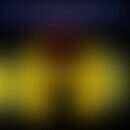HistoryThis section has been translated automatically.
The first international classification of headaches was created in 1966, partly to standardize the inclusion criteria for studies (Agosti 2015).
In Germany, headache research began in the 1970s with D. Soyka. He facilitated the founding of the German Migraine and Headache Society (DMKG) on June 28, 1979 in Erlangen and also helped initiate the founding of the International Headache Society (IHS) (Straube 2015).
The IHS (International Headache Society) was founded in England in 1981. It took over the development and publication of the ICHD (International Classification of Headache). Several revisions were made in the course of time (Agosti 2015).
SUNCT syndrome was first described by Sjaastad et al. in 1989 (Agosti 2015).
The European Academy of Neurology's guideline on the treatment of headaches caused by medication overuse was first published in 2020 (Diener 2020).
DefinitionThis section has been translated automatically.
Headaches are the leading symptom of numerous clinical pictures (Michel 2016). It is a neurological symptom that most frequently leads patients to an emergency room (Straube 2018).
You might also be interested in
ClassificationThis section has been translated automatically.
The ICHD distinguishes between over 200 types of headache (Agosti 2015).
A distinction is made between primary and secondary headaches.
- Primary headaches:
They occur in > 92% of those affected (Herold 2018). There are no clear causes for these types of headaches (Agosti 2015). These include:
- Tension headaches 69% (affects approx. 10.3% of women and 6.5% of men [Neeb 2023])
- Migraine 16%
- Idiopathic stabbing 2%
- Exertion headaches 1%
- Cluster headaches 0.1% (Kasper 2015)
- SUNCT syndrome, the rarest primary headache disorder (Agosti 2015)
- Secondary headaches
They are caused by exogenous disorders. These include:
- Systemic infections 63%
- Head injuries 4%
- Vascular diseases 1%
- Subarachnoid hemorrhages < 1%
- Brain tumors 0.1% (Kasper 2015)
- Cranial neuralgia, central and primary facial pain:
Found in < 1% of all headache patients and can be caused by, for example:
- Ocular diabetic neuropathy
- zoster
- Primary trigeminal neuralgia (Herold 2018)
Occurrence/EpidemiologyThis section has been translated automatically.
Headaches without an exogenous cause are most commonly caused by migraines, followed by tension headaches and trigeminal autonomic headaches (Kasper 2015).
Headaches are one of the most common reasons why patients consult a doctor (Kasper 2015).
PathophysiologyThis section has been translated automatically.
Headaches can arise in two ways. On the one hand as somatic pain caused by irritation of the peripheral nociceptors, and on the other hand when pain-generating pathways in the CNS are damaged or inappropriately activated (Kasper 2015).
ClinicThis section has been translated automatically.
Around 60% of those affected suffer from moderate headaches. The average duration of tension headaches is 14.3 hours (Göbel 2025), according to the guideline between 30 minutes and a maximum of 7 days (Neeb 2023).
Primary headaches in particular often lead to considerable disability and impairment of quality of life (Kasper 2015).
Secondary headaches can also be an emergency situation. The rule of thumb here is that the more intense and acute the onset of a headache, the more likely it is to be an emergency situation (Keidel 2006).
DiagnosticsThis section has been translated automatically.
- Medical history
The medical history is very important for headaches. In particular, the following questions should be asked:
- First time or chronic onset
- Localization of the pain
- Duration of the pain
- Accompanying symptoms such as nausea, sweating, seizures, visual disturbances, dizziness, signs of an acute infection,
- Question about existing pregnancy
- Medication taken for the first time or acute discontinuation of medication
- Family history of headaches
- Blood pressure measurement (Keidel 2006)
- Neurological examination
- Internal examination (Neeb 2023)
- Intraocular pressure measurement (Agosti 2015)
- There are also numerous questionnaires for tension headaches and migraines (Agosti 2015).
Apparative examinations should be carried out for:
- Pain of a previously unknown intensity
- Consuming underlying disease such as HIV, tumor
- Accompanying symptoms such as
- fever
- meningitis
- Epileptic seizure
- Personality changes
- Papilloedema
- Cognitive disorders
- Occurrence of pain during exertion or Valsalva maneuver (Zettl 2021)
- Abnormal neurological findings
- New onset of headache after the age of 50
- Trigeminal neuralgia
- On occurrence of a trigeminal autonomic headache
- Atypical headache history
- Change in known headache (Holle-Lee 2021)
General therapyThis section has been translated automatically.
The therapeutic options are numerous and depend on the cause of the headache.
NaturopathyThis section has been translated automatically.
see also under Migraine (order therapy, see also Baunscheid method, moxibustion, cupping massage). Kneipp water treading, also foot reflexology.
Phytotherapy internalThis section has been translated automatically.
With positive monograph: Salicis cortex, Willow
Without monograph: Harpagophyti radix, Tanaceti parthenii herba (positive monograph for migraine), Betel nut, Herba Asperulae, Herba Cannabinae aquaticae, Dog chamomile, stinking; Mulberry bush Indian; Noni juice, Tanaceti parthenii herba, Uzarae radix, Wormwood
LiteratureThis section has been translated automatically.
- Agosti R, Diener H C, Limmroth V (2015) Migraine and headache: A reference book for general practitioners, specialists, therapists and sufferers. Karger AG Basel 3-4, 85, 382
- Diener H C, Antonaci F, Braschinsky M, Evers S, Jensen R, Lainez M, Kristoffersen E S, Tasssorelli C, Ryliskiene K, Petersen J A (2020) European Academy of Neurology guideline on the treatment of headache due to medication overuse. European Journal of neurology. 10.1186/s42466-022-00200-0 , 4 , 1
- Göbel H (2025) The headache: causes, mechanisms, diagnosis, therapy. Springer Verlag Berlin 526-527
- Herold G et al. (2018) Internal medicine. Herold publishing house 126
- Holle-Lee D (2021) The headache outpatient clinic: forms and causes of headaches. The correct diagnosis and effective therapies. Herbig in the Franckh-Kosmos-Verlag Stuttgart 23
- Kasper D L, Fauci A S, Hauser S L, Longo D L, Jameson J L, Loscalzo J et al. (2015) Harrison's Principles of Internal Medicine. Mc Graw Hill Education 107-111, 2586-2590
- Keidel M (2006) Headache management in practice. Georg Thieme Verlag Stuttgart / New York 54, 69, 100, 102, 110
- Michel O (2016) Headache. ENT 64, 61-73
- Neeb L et al. (2023) Diagnosis and treatment of tension-type headache. S1 guideline. In: German Society of Neurology (ed.), Guidelines for diagnosis and therapy in neurology. www.dgn.org/leitlinien accessed on 07.08.2025
- Straube A (2018) Headaches. In: Reimers C, Straube A, Völker K. Patient information sports in neurology- recommendations for physicians. Springer Verlag Berlin, Heidelberg https://doi.org/10.1007/978-3-662-56539-1_9
- Straube A, Gaul C (2015) Headache. Pain 29, 510-515 https://doi.org/10.1007/s00482-015-0040-2
- Zettl U K, Sieb J P (2022) Diagnosis and therapy of neurological diseases. Elsevier Urban und Fischer Verlag Germany Chapter 17.7.1
Incoming links (19)
Betel nut; Cabbage leaf wrap; Cytisi scoparii herba; Dog chamomile, stinky; Foot reflexology; Harpagophyti radix; Herba asperulae; Herba Cannabinae aquaticae; Indian mulberry; Noni Juice; ... Show allOutgoing links (17)
Betel nut; Cabbage leaf wrap; Dog chamomile, stinky; Foot reflexology; Harpagophyti radix; Herba asperulae; Herba Cannabinae aquaticae; Indian mulberry; Migraine; Monographs; ... Show allDisclaimer
Please ask your physician for a reliable diagnosis. This website is only meant as a reference.




